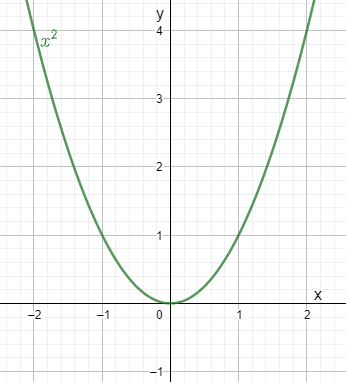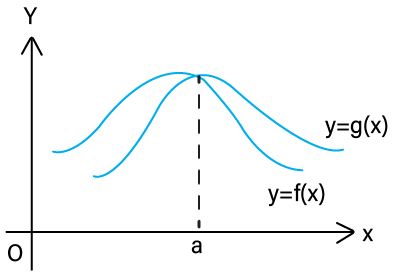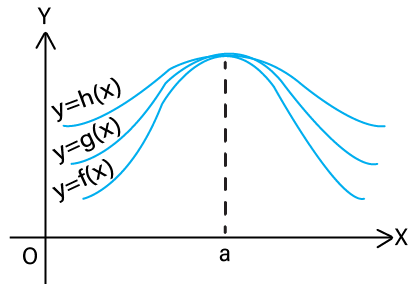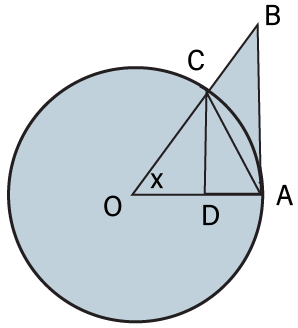Maths Notes for Chapter 12 Limits and Derivatives Class 11 - FREE PDF Download
FAQs on Limits and Derivatives Class 11 Maths Chapter 12 CBSE Notes - 2025-26
1. What are the most important concepts to revise in Class 11 Maths Chapter 12 on Limits and Derivatives?
When revising Limits and Derivatives for Class 11, focus on these key areas as per CBSE 2025–26 syllabus:
- Understanding the formal definition of limits and left/right hand limits
- Standard limits including trigonometric, exponential, and algebraic types
- Algebra of limits (sum, difference, product, quotient of limits)
- Sandwich theorem and its application
- The concept and first principle definition of derivatives
- Derivative formulas for standard functions
- Basic rules: sum, product, quotient, and chain rule for derivatives
Emphasize formulas, theorems, and quick examples during last-minute revision.
2. How can revision notes help in quick preparation for Limits and Derivatives?
Revision notes condense the chapter into main concepts, formulas, and definitions. They allow students to:
- Quickly recap essential points without reading the entire textbook
- Identify priority areas and commonly asked types of questions
- Remember key theorems and shortcut methods before exams
- Connect different topics such as limit theorems with derivative rules
This approach is ideal for efficient, stress-free revision and retaining crucial details for exams.
3. What is the recommended order to revise topics within Limits and Derivatives for maximum retention?
For maximum understanding and retention, the revision sequence should be:
- Start with the definition and properties of limits
- Proceed to standard and algebraic limits with examples
- Revise the sandwich theorem and its proof/application
- Study the definition of derivatives and first principle method
- Learn and practice all standard derivative formulas
- Finish with basic rules (sum, product, quotient, chain) and solved problems integrating both limits and derivatives
This structured order helps build conceptual clarity for CBSE examinations.
4. Which mistakes should students avoid while revising Class 11 Limits and Derivatives?
Common mistakes to avoid are:
- Skipping the formal definitions of limits and derivatives which are often asked in exams
- Forgetting to check left and right hand limits for continuity and existence of a limit
- Not practicing graphical interpretation of limit and derivative problems
- Ignoring proof-based results like the Sandwich theorem or standard limits
- Overlooking exceptions, such as limits that do not exist or differentiability at a point
Being aware of these pitfalls can improve accuracy and confidence.
5. How are revision notes for Limits and Derivatives different from detailed NCERT solutions?
Revision notes provide concise summaries, key terms, theorems, and quick formulas for rapid study, focusing on recall and connections between concepts. In contrast, NCERT solutions explain every step of solving textbook problems with detailed working and reasoning. Use revision notes for last-minute review and quick concept mapping, while solutions should be used for practicing question-solving approaches.
6. What strategies should students follow to revise formulas effectively in Chapter 12?
To revise formulas efficiently in Limits and Derivatives:
- List all standard limits and derivative formulas in one place
- Use flashcards or sticky notes for repeated self-testing
- Practice applying each formula to at least one example
- Make connections to real problems, like using the product/quotient rule on NCERT questions
- Reinforce understanding by explaining the meaning of each formula in your own words
7. What is the link between the concept of limits and continuity in calculus?
Limits are foundational for understanding continuity. A function is continuous at a point if the left hand limit, right hand limit, and the function’s value at that point are all equal. Thus, mastering limits is essential before moving to continuity and then to differentiability. These concepts are deeply connected and commonly sequenced in CBSE syllabus and exams.
8. How can students use revision notes to strengthen problem-solving for Limits and Derivatives?
Revision notes typically include solved examples and summary tables that:
- Show step-by-step application of formulas for common question types
- Highlight techniques for approaching tricky problems (such as using substitution or rationalization for limits)
- Feature “quick reference” theorems and proofs that aid in solving HOTS (Higher Order Thinking Skills) questions
Using the notes while practicing problems helps in linking concepts to application and improving speed and accuracy.
9. Why is it important to understand the algebra of limits for Class 11 exams?
The algebra of limits governs how limits interact under addition, subtraction, multiplication, division, and scalar multiplication. This understanding is crucial for:
- Simplifying complicated limit expressions
- Handling composite functions and combinations in exam questions
- Avoiding mistakes when denominators approach zero
Mastery of these rules directly affects exam performance and reduces calculation errors.
10. What are the benefits of making a concept map while revising Limits and Derivatives?
Creating a concept map helps visualize connections between theorems, formulas, and application areas in Limits and Derivatives. This method:
- Aids in remembering the logical order of concepts
- Reveals how limit theorems support derivative proofs
- Makes last-minute revision more organized and effective





























